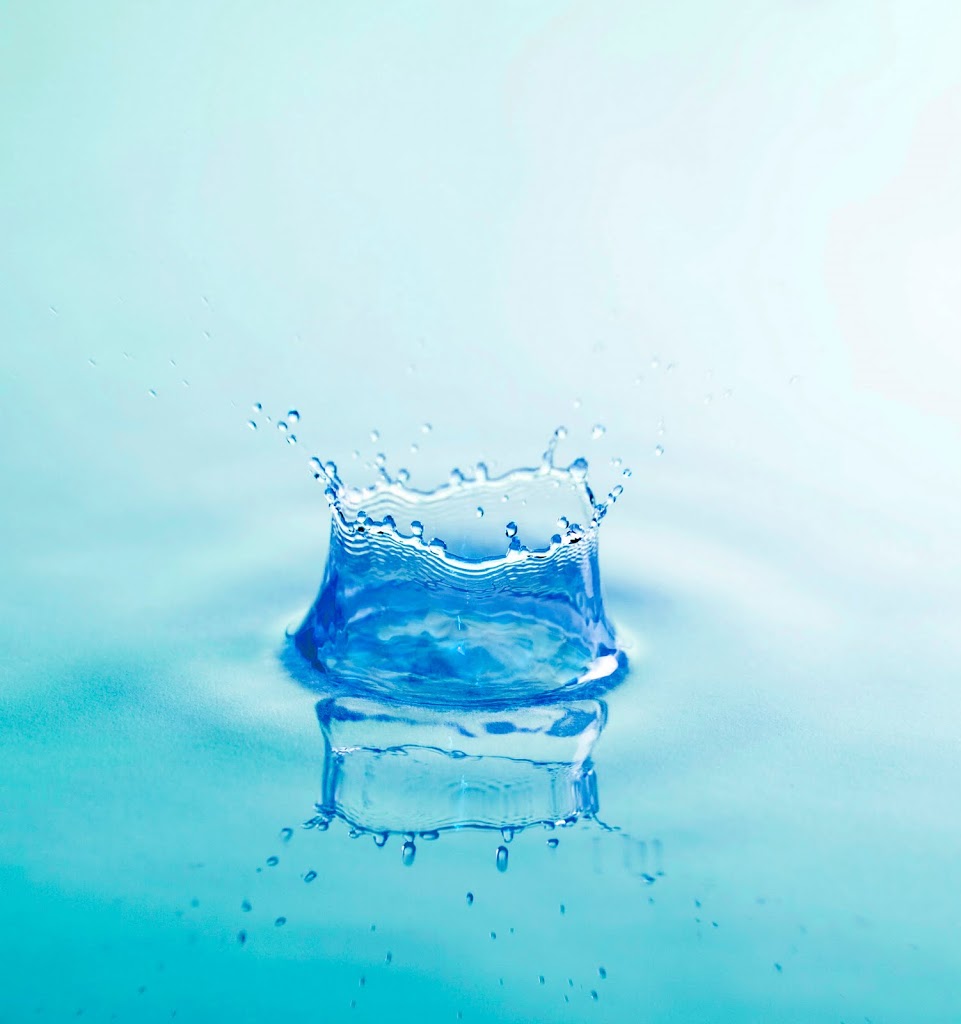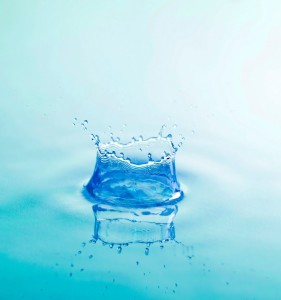
by theglamscientist | | Cosmetic Ingredients Review, cosmetics, hair conditioning, moisturizer, moisturizing, occlusive agents, skin conditioning, water |

A few weeks ago, I saw a tweet that baffled me a bit. Someone (I don’t remember who) was completely annoyed that the top ingredient in some product was water. My first thought was “Whoa, what’s wrong with water?!” More recently, I read about a product line whose claim to fame is “water-free”. From a formulator’s perspective, water can be a nuisance when you are trying to avoid the use of preservatives. That is a big deal in times like these where the natural, eco and organic movement is in full effect. I’m still not clear why consumers would be up in arms about the presence of water in a formula, but I’m here to tell you why you should love it.
Water is THE ultimate moisturizer. Moisture cannot exist if water is not present, so the primary function of water in a moisturizing product is to be the source of moisture. In a perfect world, water would be all we need to maintain well moisturized skin and hair, but that’s just not the way it is. Because water will always evaporate, there needs to be ingredients in a product that act as a barrier to prevent water loss. These barrier (occlusive) ingredients are waxes, vegetable oils and silicone oils. As a bonus, most barrier ingredients come with added benefits like vitamins, minerals, essential fatty acids, etc.
Another main function of water in a cosmetic formula is to be a solvent. Not only are raw materials concentrated, but they also need a medium to be dispersed. Water dissolves these raw materials and allows them to be used in safe concentrations. [While many raw materials can be used as is, they are equally effective in lesser concentrations.] I fear that some people think water as a top ingredient makes the product “watered down” or ineffective. That couldn’t be further from the truth. Consider the amount of laundry detergent you use in relation to the amount of water the fills the washer. The ratio of detergent to water is clearly 1 to 99 yet, you have full confidence that the minute amount of detergent you used will clean your clothes. The same concept applies to water in cosmetics.
Finally, water plays a major role in the texture of a product. Moisturizers and hair conditioners, for instance, benefit from easier application, spreadability (hmmm is that a word?) etc when water is used effectively. Water as a main ingredient can also be indicative of a lighter formula.
Contrary to popular belief, all skin types and hair types need moisture. So the next time you see water as a top ingredient, be thankful that the formulator thought about your need for moisture. Pay closer attention to the types of oils the product uses to lock that moisture in… dry skin and hair will need heavier oils and oily skin will need much lighter oils.
Are you a consumer that’s not big on water in cosmetics? How do you feel about it now?
by theglamscientist | | emollient, hair care, humectant, moisturizer, pantene, panthenol, pantothenic acid, skin care, vitamin B5 |
I’ve often seen panthenol in the ingredients of shampoos, conditioners and moisturizing facial products. Panthenol can be classified as a humectant, emollient and moisturizer. A humectant draws water to a surface (for our purposes hair and skin) thus increasing hydration. An emollient makes skin soft and supple and generally results in a soothing sensation.
Panthenol easily binds to the hair follicle and seals the surface which increases shine (Remember the post about shine and scatter?). This is the ingredient that Pantene capitalizes on… I’ve seen it in every one of their products that I’ve tried (thats almost all of them! I love Pantene). In hair treatments it is used in a concentration of 0.1-1%. The skin can absorb panthenol rather easily and effectively. It can be used to treat sunburn, minor burns and certain skin conditions. I found it in my moisturizing toner (I swear by toner!).
I guess after all that I should tell you guys exactly what it is. Panthenol is the alcohol analog of pantothenic acid (also known as vitamin B5!). In lay-man’s terms, a piece of the B5 chemistry has been replaced with an alcohol. So they’re kind of like cousins. Panthenol has passed the CIR (Cosmetic Ingredient Review) for safety in concentrations up to 25%. I haven’t read any negative press about this ingredient, but if I find any, rest assured I’ll report it.
by theglamscientist | | chemicals, cosmetics, emollient, lubricant, moisturizer, polypropylene glycol butyl ether, polypropylene glycol stearyl ether, PPG-11, PPG-15, propylene glycol, stearyl alcohol |

Polypropylene glycol stearyl ether is mainly found in ‘moisturizing’ personal care products. It is written as PPG-11 or PPG-15 stearyl ether in the ingredients lists. This ingredient is made by the reaction between propylene oxide and stearyl alcohol. Stearyl alcohols come from animal fats and oils (vegans beware!). The 11 or 15 designation is based on the ‘units’ of propylene glycol produced in the reaction.
PPG-11/15 stearyl ethers are known lubricants meant to give the skin a moisturized look and feel. They are also classified as skin conditioning agents and emollients. The chemicals have been deemed safe at the concentrations typical of most cosmetic applications they are found in. Even concentrated, these chemicals did not irritate the eyes. A related chemical, PPG butyl ether was found to be slightly irritating to the eyes and skin. It is absorbed very slowly-if at all- into the digestive tract where it is easily metabolized and eliminated as waste in the urine.
As time progresses and my knowledge increases, I’m becoming more compelled to make the switch to all natural personal care products. I currently use over the counter products, all of which contain the ingredients I’ve reviewed thus far. I have not experienced any known irritation to the products I use daily and I am satisfied (most of the time) with the results— I have very tempermental skin! I just can’t help but wonder what long term effects my drug of choice may be having on my well-being. Think about it for yourself.



